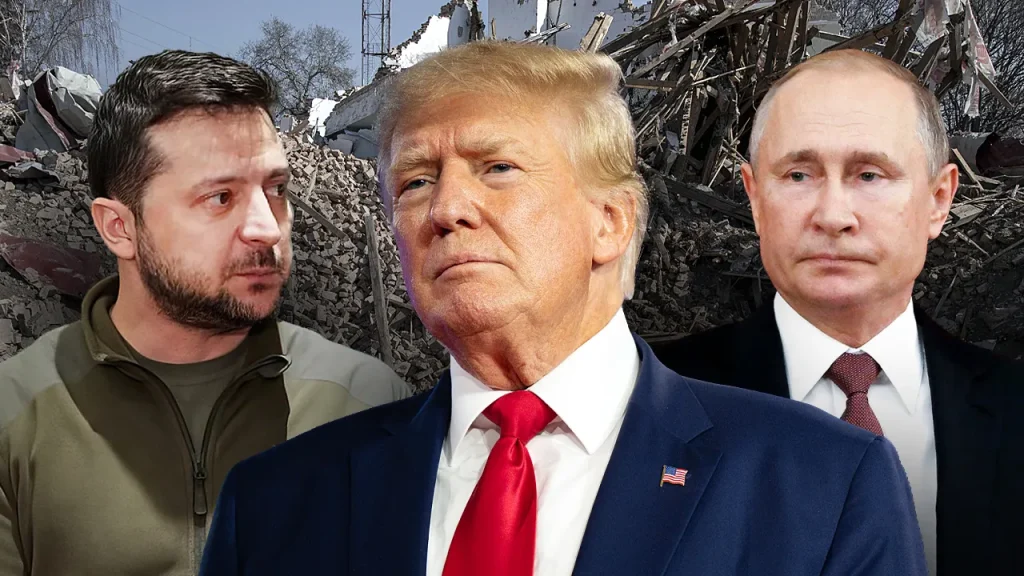Navigating the Delicate Path to Peace in Ukraine
In a significant diplomatic push, the United States is advancing a revised peace framework to end the devastating war in Ukraine, with officials from all sides suggesting a potential breakthrough might be closer than at any point since Russia’s invasion began. However, a fundamental obstacle remains: Russia demands Ukrainian territory, while Ukraine steadfastly refuses to surrender any of its land. This territorial impasse continues to be the central challenge in achieving lasting peace, even as diplomatic efforts intensify amid ongoing violence.
President Donald Trump has expressed optimism, citing “tremendous progress” and announcing that his special envoy, Steve Witkoff, will meet with Russian officials in Moscow. Simultaneously, senior U.S. defense leaders are engaging with their Ukrainian counterparts. A senior American official confirmed that Kyiv has accepted the “broad contours” of an emerging deal, with only “minor details” remaining under negotiation. European allies appear to be aligning behind the effort, with France advocating for a “just and lasting peace” through a new “Coalition of the Willing.” Yet this diplomatic momentum occurs against the backdrop of continued Russian missile and drone strikes on Kyiv, which have killed civilians and damaged critical power infrastructure—a stark reminder of the war’s brutal reality as negotiators grapple with their seemingly irreconcilable positions on territorial concessions.
Ukrainian perspectives on the peace proposal reveal complex feelings within the country. Oleksii Honcharenko, an opposition member of Ukraine’s Parliament, believes Ukraine must pursue peace “as soon as possible,” even while acknowledging that large segments of Ukrainian society distrust the emerging plan. “This plan is a chance. I don’t like everything in it… some things are unacceptable. But it is a workable framework,” he told Fox News Digital. Honcharenko dismissed concerns that the proposal represents a U.S.-Russia blueprint imposed on Kyiv, focusing instead on the practical need for a resolution: “For me, it doesn’t matter who the initial author was. There is a framework. Let’s work on it.” He acknowledged that sanctions relief—one of Russia’s core demands—would be painful for Ukrainians but also recognized the battlefield reality: “We are not in the position where our tanks are near Moscow. There will not be a solution I like completely.” This pragmatic view reflects the difficult choices facing Ukraine’s leadership as they balance national sovereignty against the need to end a devastating conflict.
American perspectives on the conflict have largely fallen along partisan lines. Republican Rep. Andy Barr of Kentucky, a House Foreign Affairs committee member, placed the blame for the war squarely on President Biden, calling him “the weakest president in American history” and suggesting the invasion would never have occurred under Trump’s leadership. “President Trump’s peace-through-strength leadership kept Putin fully contained,” Barr claimed, adding that “Trump is the peace president… the only leader who can end this war and bring stability back to Europe.” Meanwhile, exiled Russian economist and former deputy finance minister Sergey Aleksashenko identified the territorial dispute as the primary obstacle to peace: “Russia wants to grab what it was not able to take by military means. Ukraine does not want to give up. All other points could be resolved, but not territory.” Aleksashenko expressed skepticism about Putin’s willingness to compromise, suggesting the Russian leader believes Western support for Ukraine is weakening and may be prepared to continue fighting “another two, three years” in hopes of outlasting Kyiv’s resolve and European support.
Military experts have raised serious concerns about the implications of any territorial concessions. Retired Gen. Philip Breedlove, the former NATO supreme allied commander, described the idea of Ukraine giving up land that Russia has never conquered as “an incredibly, incredibly bad thought.” He argued that Putin’s ambitions extend far beyond Ukraine, pointing to the Russian president’s stated desire to reshape Eastern Europe’s security architecture. Breedlove also highlighted the precarious position of Ukrainian President Volodymyr Zelenskyy, who is negotiating while dependent on Western governments for weapons and funding. “It’s very clear he’s being threatened with no support,” Breedlove observed. “If Mr. Zelenskyy loses the support of America and Europe, life’s going to be really ugly for Ukraine. But they will not stop fighting.” While acknowledging that early versions of the U.S. proposal contained “egregious” provisions that Ukraine would never have accepted, he noted that the process has “improved” as Kyiv’s input was incorporated—yet maintained that “the things that are acceptable to Ukraine are not going to be acceptable to Mr. Putin.”
As diplomatic efforts progress toward what may be a final round of negotiations, the fundamental question remains whether Ukraine and Russia can overcome the territorial divide that has defined this conflict from its beginning. The peace process now hinges on whether both sides—under pressure from allies, incentivized by Washington, and facing the harsh realities of the battlefield—can find compromise on the most intractable issue: land. While progress has been made on various aspects of a potential agreement, the core territorial dispute continues to be the decisive factor in determining whether this diplomatic initiative will succeed where previous efforts have failed. The stakes could not be higher, not just for Ukraine and Russia, but for European security and the broader international order that has been fundamentally challenged by this conflict. Whatever the outcome, this diplomatic push represents a critical moment in a war that has already reshaped global politics and caused immeasurable human suffering.


